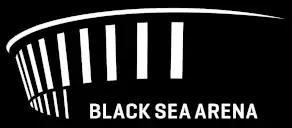
How to determine the amount of traffic your site's web server can safely handle
You don't have to wait for the world to cave in to realise your site isn't prepared for hefty surges in traffic. The technology is available to test each system and find out what it can safely handle.
Performance testing can predict the essential data you need using established tools and techniques.
- Load testing simulates what would happen with expected site traffic increase, for example, the added demand from email campaigns or facebook or other social media and PPC advertising.
- Stress testing simulates what would happen with even more pressure from further site traffic. It identifies the points where systems and applications slow down and stop working altogether. This helps owners understand their system architecture and determine if it's appropriate for their current business and future growth.
- Spike testing gathers data for situations where a sudden surge hits your servers, above what your system can cope with—ideal for predicting outcomes of SPAM or other DoS attacks.
- Soak testing measures the anticipated issues when a system is subject to high traffic levels of your web users over extended periods.
One thing's for sure; testing must happen before it's too late. We've all heard the phrase, ‘closing the stable door after the horse has bolted’. It couldn't be more appropriate for the problems huge traffic surges can bring to your business.
There are easier ways for a site owner to work out safe levels of site traffic for high traffic websites without a slow down - read our handy guide.
What can you do with all that extra high traffic to stop it crippling your website's speed or app performance?
There are always several solutions to every given problem, and surges in site traffic are no exception. Here are a few ways to try and keep your systems safe and visitors happy when those sudden bursts of activity hit your individual servers - there are at least three main strategies to add capacity:
Streamlining your high traffic website to deliver less dynamic content in bottleneck areas
If it's all about crunching numbers (and it is), many organisations reduce the amount of data being moved around by slimming down the pages getting the most attention. With a slimmed-down set of pages, consolidation of multiple css files to reduce file sizes, a reduction of dynamic content, simplified page components or install a caching plugin, perhaps delivered to a larger number of visitors only at peak times, your web server has less work to do per website visitor, and can manage more traffic load.
Building specific landing pages containing only static resources for advertising events off-site, with a different hosting provider or in alternative locations on multiple servers, to protect valuable web server resources is another way of keeping that huge traffic load away from your heaviest performing pages - and it's worth taking a look at how your content management system or operating system is affecting performance too - but time spent on a "fine tune" may not always yield significant enough benefits. There are a variety of optimization techniques and optimization plugins you can use, including image optimization, to reduce the amount of site traffic coming from other machines, without using more resources to serve media files. If you install a caching plugin that can compress images as your visitors down load images, or compress html or css files to reduce file sizes and increase speed, that can help your web host too.

Opting to deliver third-party content
Websites under pressure utilising third-party content can remove some of that website pressure away from their web hosting provider. If website analytics pages, testing protocols, payment gateways, or social media integration can happen off-site, then it frees up website processing power to manage those excess bursts of visitors.
Website caching
Caching content for re-delivery is another option. For subsequent users viewing the same data, it can pay to utilise server-side caching, quality content delivery networks, proxy and browser caches, or any other type of client-side storage available during the process. These are often deployed with minimal changes to your domain name server configuration.
With database-driven systems, particularly eCommerce sites, they're continually interacting with their databases to produce new pages. This can create a massive strain on processing when high traffic floods in at speed. Creating a page once and re-delivering it significantly reduces that pressure, often enough to avert disaster.
Load balancing your web servers
When inundated with unexpected high traffic, load balancing handles visitors' website traffic by splitting your daily site traffic above the server level and routes it through two or three different web servers (typically), taking the pressure off any single server when facing heavy loads and reducing load time. Intelligent load balancing, carried out using load balancing switches around available servers, diverts traffic from struggling servers to the most responsive, so your site performs as you need it to, delivering the types of page speed your customers expect. A load balancer spreads high traffic - it translates domain names to a range of web server ip addresses and often uses a redundant approach with an identical copy of the site on each web server - but load balancers are still not an ideal solution to those high traffic website events and can increase your web development and disk space costs compared with a single machine.
What happens when there's too much traffic for your regular workarounds?
That's where we come in. Queue-Fair is a digital queuing system that moves your excess traffic into a safe environment—a virtual waiting room on its own dedicated hosting.
Each user is assigned a first-come, first-served slot in the queue and is recalled to your website as soon as the website is ready for them. They queue on a different url from your site so there's no load at all on your website servers, and Queue-Fair safely handles millions of people joining the queue every minute. It's the most effective method to cope with both expected and unexpected website peaks.
With all the information presented to visitors in a branded format that integrates seamlessly with your website, visitors can make the best use of their time, stress-free, knowing where in the queue they sit, the speed they're moving up the line, and how long their wait is likely to take.
If your website is working under normal traffic capabilities, won't even know it's there. Our system works with your existing dedicated server hosting plan or scalable plan, protecting you from the surge flooding your most popular web page when a large number of visitors arrive at speed.
It's simple, it's fair, and it protects your web systems, your customers, and your brand reputation. Delivering truly impressive specifications, it's the perfect solution that will save you from stress, downtime, and the kinds of financial losses nobody wants to suffer - so maybe you can avoid huge enterprise class machines and keep that cheapest web hosting plan or shared hosting after all...

































